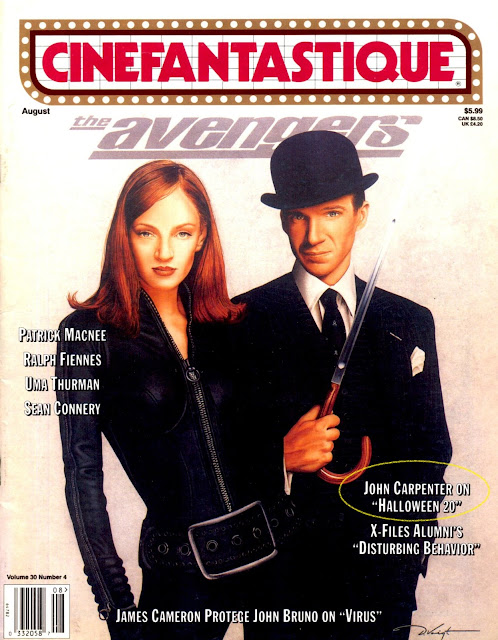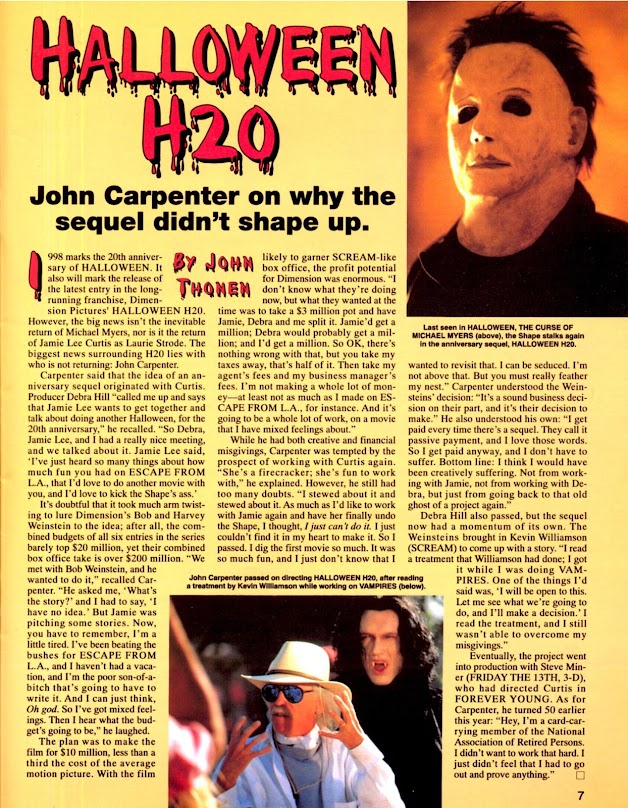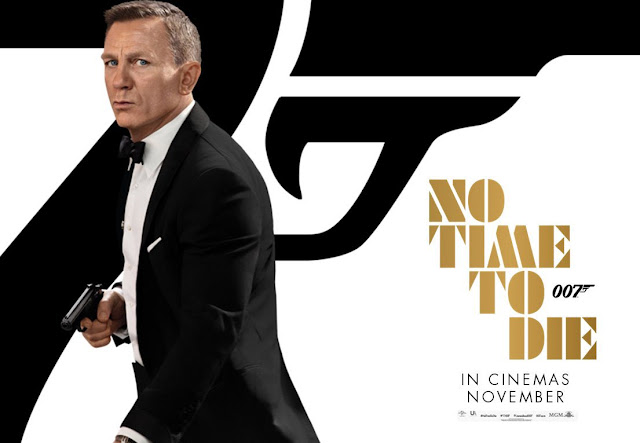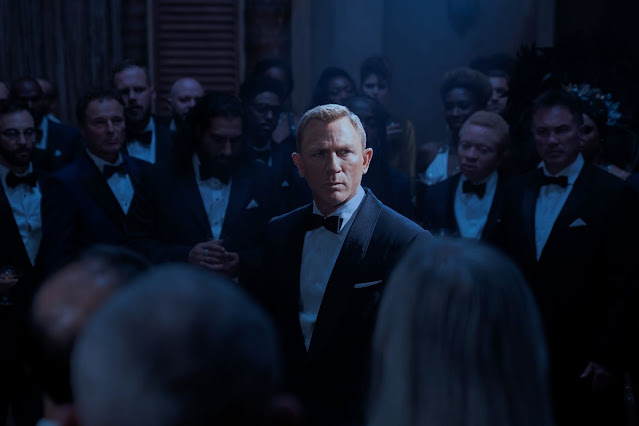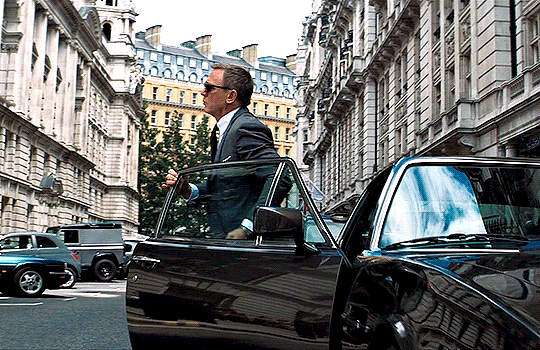
Warning: Spoilers for the Candyman series.
The idea of going back to the Candyman franchise thirty years after
the original terrified the previous generation seemed a little unwise and
fairly arrogant—for all kinds of reasons. Where to start? Though it’s generally
(and unfairly) lumped in with other slasher sagas, the Candyman series only made it to three entries, very much on the low
end when compared to its double-digit-reaching colleagues. Indeed, the series
has been extinct for over twenty years, thanks to 1995’s underwhelming Farewell to the Flesh and 1999’s
atrocious direct-to-video Day of the
Dead. On top of that, the irreplaceable Tony Todd had obviously aged out of
the title role, and there was really no one left standing at the end of that
brilliant original movie to continue the story (…or was there?). Probably the
most important question: could a modern filmmaker working on behalf of a major studio
have the same uncanny ability for unnerving audiences like writer/director
Bernard Rose had back in the dark ages of 1992? Could anything baring the Candyman name in this day and age really be as terrifying?
For once, though the trailers
gave away a lot, they didn’t give away everything,
and what was assumed to be a straight-up reboot of the series’ overall
concept was actually a sequel in very sly sheep’s clothing, allowing for the
return of characters (and actors) not seen since Candyman ‘92. Much like 2018’s Halloween,
this belated Candyman follow-up has
ditched its association with every sequel outside of the original, only keeping
the real name of Candyman intact as Daniel Robitaille, as established in Farewell to the Flesh. It’s also very
much a loyal sequel, calling back to
the original as much as possible while still digging deeper into the concept of
Candyman as a character, as a legend, as a concept, and as something much
more—“the whole damn hive” as the movie explains.

Anthony McCoy (Yahya Abdul-Mateen
II, the upcoming The Matrix Resurrections)
is an artist in a rut, living with his art promoter girlfriend Brianna
Cartwright (Teyonah Parris, the fucking hysterical They Came Together) in a swanky Chicago apartment that, once upon a
time, had been part of the Cabrini-Green housing projects where large portions
of the original film took place. After hearing the legend of Helen Lyle,
Virginia Madsen’s character from Candyman
‘92, whose life story has been rewritten to make her a Candyman-like
villain as opposed to the hero, Anthony begins to research the mythos by
heading to where it all went down: what remains of the Cabrini-Green projects.
He soon meets William (Colman Domingo, Selma),
manager of a local laundromat, who tells him of his own murderous run-in with
Candyman as a child…only it’s not the Candyman audiences already know (Todd),
but an altogether different hook-handed weirdo in a flowing jacket named
Sherman Fields (Michael Hargrove), a well-meaning but slow-witted local killed
by police after having been falsely accused of injuring children with razor-blade
candy. Following his killing, Sherman returns as the eponymous mirror man,
killing those who call him by his new name, which directly results in the
death of William’s sister. Now infected with Sherman’s image, and, naturally,
after repeating the name “Candyman” five times into the nearest mirror, Anthony
begins to suffer hallucinations of a bloodied and mutilated Sherman Fields appearing
in every mirror reflection, all while a nasty bee sting seems to be
transforming his body into a hideous husk. Meanwhile, his previously dismissed
art gallery exhibits inspired by Candyman begin to gain traction…in conjunction
with the deaths of those with immediate ties to Anthony’s work as an artist.
Soon, as word of Candyman’s terror begins to spread, so does that of the means to summon
him: by looking into the nearest mirror and saying his name.
It’s often said for belated
sequels like this that prior knowledge of previous movies isn’t necessary to
enjoy any updated take (especially those belated sequels that drop all numerals
and subtitles and reuse the original moniker, a trend I really wish would go out of style), but when it comes to Candyman ‘21, written/produced by
Jordan Peele (Get Out, Us) and directed by Nia DaCosta, I could not disagree more. Sure, if you’ve
never seen the original film, you could still find things to enjoy and grasp
the overall concept while also getting a nice dose of the creeps, but by
default it would prove to be an almost hollow experience—especially with its
ending. Candyman ’21 isn’t just an
homage or a universe side adventure—it depends
on the original film to flesh out its story in the very same way it depends on
it for its entire existence. If Candyman
’21 were a haunted house, Candyman ’92
would be its ghost. The original film’s events, ideas, and characters permeate
the events in this new take, which finds dozens of loving ways to loop itself
in with its predecessor, falling back on even its most background details (like
the razor-blade candy, which remained unexplained in the original and remains
unexplained here). Relievedly, there are no radical reinventions of the
concept—at least, none that don’t expand on ideas already well established. Even
the musical score by Robert Aiki Aubrey Lowe presents in the same spirit as Philip
Glass’s score for the original, crafting a very experimental and
non-traditional soundtrack, along with lifting its most recognizable theme and
reinventing it as a pensive and melancholy melody on electric organ. Candyman ’21 isn’t out to exploit its
namesake while pushing aside everything that made it so wonderful; if there’s
any one modern sequel that proves its love for its source material, it’s this
one.

Candyman ’92 laid the groundwork for who Candyman is, and most
importantly, why he persists. As intimated, Candyman is a walking embodiment of
his own legend and of the fear he causes in those who believe in him. As the
legend of Candyman grows, so does his presence in the world, and as his
presence grows more well known, the
legends about him grow further, and on and on, an endless loop of a mythical
being’s willed existence. Though the main thrust of events is centralized to Cabrini-Green
in Chicago, it’s suggested his legend is known everywhere, including the middle-of-nowhere suburbs, the setting that
provides the film’s opening kill. When Helen Lyle saves Baby Anthony,
previously kidnapped by Candyman to serve as a sacrifice that would make both
Candyman and Helen immortal in story
and together forever, those Cabrini-Green residents who bore witness to the act
credit her with having killed the boogeyman who has long haunted their lives.
Over time, however, as evidenced during Candyman
21’s opening modern-day moments, it would seem that Helen Lyle has inherited
the Candyman mythos. We, the audience, know the truth, but for those characters
in the room hearing the story for the first time, that version of the myth becomes
their truth. That’s how urban legends
spread, growing more and more powerful with every new person who tells them. To
destroy the Candyman, one must destroy the belief in him, but following this logic,
that also allows the Candyman legend to change at will, so long as enough
people disseminate all the different variations of the story. “The hive,” as
it’s called, is the accumulation of black lives lost to hate in the decades
since the lynching of Daniel Robitaille; though the identities and details
change, with certain people being haunted by their version of their Candyman, all of those variations are ultimately
absorbed back into, for lack of a better word, the myth of the OG Candyman (Tony
Todd, who returns for just one brief moment). He is the dumping ground for the
world’s racial hate—a sort of anti-Batman on whom Cabrini-Green needs to hang
its history of pain. This concept of “the hive” is the backbone of Candyman ’21 and is a major feat pulled
off by the filmmakers with great success. It not only remains faithful to all
the rules established by its predecessor, it greatly expands the mythos and
brilliantly allows Todd to reprise the role in just a single appearance,
limited to a single line, while reestablishing his Candyman as the Candyman.
It doesn’t matter that he’s not the main Candyman glimpsed throughout the
movie; ultimately, it’s still the story of the
Candyman who started it all.
Also returning is
Anne-Marie McCoy (a quietly devastating Vanessa Williams), not seen in this
series since the closing moments of Candyman
’92 in which she peers down into the open grave of Helen Lyle, the savior of
her son. Her one scene offers affirmation to the audience that the histories of
the McCoy family and that of the Candyman are intertwined and sadly
inescapable; though Anthony begins to suspect his place in Candyman lore, it’s
not until the confrontation with his mother that we know it’s all true—in that
moment, Anthony believes, thus giving the Candyman legend power, and thus
setting into motion his own transformation. Seeing Williams return to the role not
only cements this “twist” in the story and brings with it a series history that
works in tandem with Candyman’s own, but also provides a nice little shot of romanticism,
as we horror fans love nothing more than seeing iconic faces return to our
beloved franchises. (Also, that woman does not age.)

Candyman’s biggest detriment is its incapability of executing any
sequences of real fear—at least the kind of fear with the same staying power of
its predecessor…though perhaps that’s unfair. Candyman ‘92 remains one of the scariest mainstream horror films of
all time; its very first frame establishes a sense of dread and ominousness
that continues until its very last. (The bathroom murder sequence involving a
young child is still a top-ten “that fucked me up” moment of my entire
horror-watching life.) That’s not to say Candyman
’21 doesn’t contain its own collection of eerie images because it certainly
does, and “new” Candyman Michael Hargrove unnerves the viewer with nothing more
than a smile, but it never reaches those “dangerous” scary heights that give
you pause to continue watching any further.
By its very design, Candyman ’21 has an awful lot of balls
in the air, and for the most part it keeps them all moving fluidly without
causing a catastrophe, though threatening to overcomplicate matters is an
underexplored subplot in which Brianna deals with a past trauma involving the
suicide of her father, who was also an artist. Though likely existing to draw
parallels to Anthony’s worsening mental state, there’s also a sly inference
that Brianna’s father was a version of her own personal Candyman, in the sense
that she’s also being haunted by someone with a tragic end whose image she
can’t seem to escape. Candyman ’21
seems to even be implying that every person has his or her own unshakeable
ghost—not walking visages of those gunned down unduly in the streets or lynched
by angry white mobs, but more along the lines of the abstract concepts a ghost
can represent: guilt, sadness, regret, or the sense of something left
unfinished.

Predictably, some critics and
audience members have dismissed this new take as being the “woke” version of Candyman, stopping at the surface level
of seeing a black man dealing with black issues caused by the fallout of racial
injustices and dismissing it unseen, but there’s not a single idea present here that hadn’t already been established by
its predecessor: first, there’s gentrification—Helen Lyle reveals that her swanky apartment building was
originally built as a housing project before some modifications transformed the
units into upscale condos in an effort to keep the rest of the housing projects
contained to the other side of the highway; and then there’s black tragedy at
the hands of an angry and racist white mob—literally how the Candyman legend
was born: his having fallen in love with a white woman and getting her pregnant;
and of course there’s a racist police system—more than once, stories are told
about how black residents of the Cabrini-Green housing projects would call 911
to report someone coming through the walls to kill them, but that no one would
come help because of how “scared” they were to come into the ghetto—and it’s
not until Helen is attacked in the projects while pursuing her research that
the cops finally act. Racial indifference, economic disparity—they are old
themes made new again. It’s ironic that William tells Anthony the legend of
original Candyman Daniel Robitaille, a renowned artist hired by wealthy
families to paint their portraits, and says, “You know how it goes: they love
what we make, but not us.” He could’ve been talking about the very movie he was
in, almost anticipating close-minded audiences to dismiss a movie with the full
right to discuss genuine societal issues—something the horror genre has only
been doing for the last hundred years—as “woke,” a term I’ve come to despise.
What bullshit.
On the lighter side, Candyman is filled with all kinds of
fun Easter eggs—homages to Clive Barker, whose short story, “The Forbidden,”
originated the Candyman character, are peppered throughout, along with an
unexpected but sweet homage, via Brianna’s surname, to genre legend Veronica
Cartwright (Alien, Invasion of the Body Snatchers), who
appeared in Farewell to the Flesh as
Candyman’s great-granddaughter. (There’s also a pretty lame nod to Jurassic Park.) I won’t point them all
out, as spotting them is part of the fun, but with Peele’s influence, they are plentiful,
reminding the audience that, yes, this movie is to be taken seriously, but that
it’s also okay to have a little fun with it.
To loop back around on the Halloween comparison, my hope is that
Peele et al. leave this newly resurrected franchise alone, as further
exploration of this newborn concept may very well result in a bed-shit a la Halloween Kills. Like Halloween ’18, Candyman ’21 works better as a one-off companion to its lineage and
doesn’t need any additional follow-ups to further explore its themes. Maybe I’m
just resorting back to my home-base cynicism, since I didn’t have any faith
that I would enjoy this new Candyman
as much as I did, but it seems doubtful the same kind of risks can be taken in
a sequel to further explore Candyman as a phenomenon without it buckling under
the weight of its own ambition. After all, Candyman
’21 is the fourth time Candyman’s name has been called. Call him a fifth time
and things could get painful.

